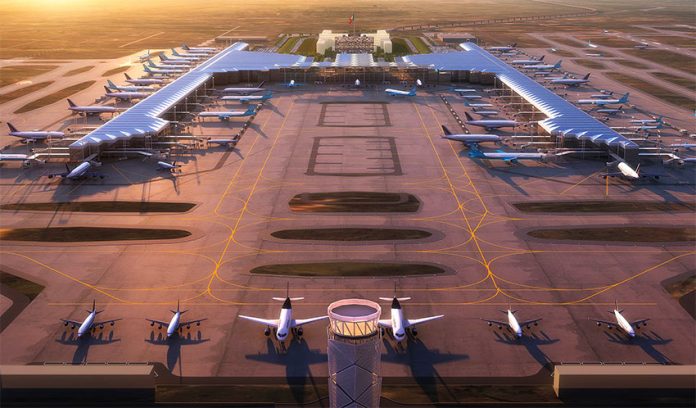Traveling via the new Santa Lucía airport will be a “memorable experience,” according to the architect chosen to design it.
In his project proposal, Chicago-based Mexican architect Francisco González Pulido said he envisions a relaxation zone in the terminal building that will incorporate spaces for yoga, meditation and massage therapy as well as rest areas with garden views.
To help passengers de-stress after a long journey, soft Mexican and classical music will be piped into baggage collection areas, González said in his pitch for the 92-billion-peso (US $4.8-billion) project to be built at the Santa Lucía Air Force base in México state.
He said the terminal walls will be made largely of glass, while its ceiling will have plenty of skylights, allowing outside views from all parts of the building.
The architect also proposed that airport restaurants and shops promote environmental sustainability by avoiding single-use plastics and providing customers with cloth bags and compostable containers for their purchases. They will source local produce including herbs grown on farms near the airport, González suggested.

Beyond those ideas, the architect will be required to comply with the government’s promise to build an airport that is “austere in its design, efficient, functional, sustainable, easy to build . . . safe and emblematic.”
The government has not disclosed details about the monetary value of the contract it has signed with González’s firm, FGP Atelier, which collaborated on the design of the Suvarnabhumi international airport in Bangkok, Thailand, and a Mexico City baseball stadium inaugurated in March.
Preparation for construction at the Santa Lucía airport site began last month, the day after the last of seven suspension orders against the project was revoked by a federal court.
President López Obrador pledged that the airport will be built in 2 ½ years, meaning that it will be ready to open in early 2022.
On its website, FGP Atelier said “the extremely condensed timeframe for design and construction as well as the very limited budget could have been seen as negative limitations.”
However, the firm said it “saw the existence of these constraints as an opportunity to refine our longstanding interest in modularity and honest use of unornamented materials on a vast scale in order to create an exceptional work of architecture.”
Source: El Economista (sp)
